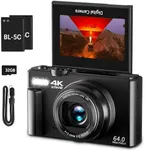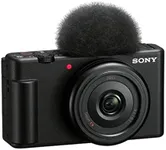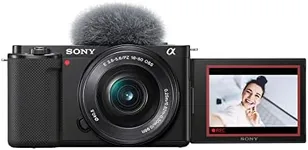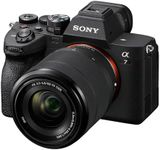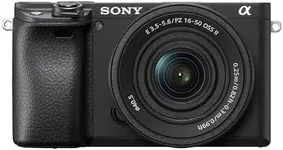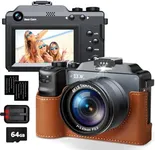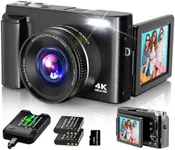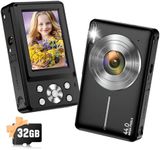Buying Guide for the Best Travel Cameras For Beginners
Choosing the right travel camera as a beginner can be a daunting task, but with the right approach, you can find a camera that suits your needs and helps you capture beautiful memories of your travels. The key is to understand the important specifications and how they align with your personal preferences and travel style. Here are some key specs to consider when selecting a travel camera for beginners.Sensor SizeThe sensor size of a camera determines the quality of the images it can produce. Larger sensors generally capture more light and detail, resulting in better image quality, especially in low-light conditions. Common sensor sizes include Full Frame, APS-C, and Micro Four Thirds. For beginners, an APS-C or Micro Four Thirds sensor is often a good balance between image quality and portability. If you prioritize high-quality images and don't mind a slightly larger camera, go for an APS-C sensor. If you prefer a more compact and lightweight option, a Micro Four Thirds sensor might be the best fit.
MegapixelsMegapixels refer to the resolution of the camera's sensor, indicating how many millions of pixels the camera can capture. More megapixels mean higher resolution images, which is useful for printing large photos or cropping images without losing detail. For most travel photography needs, a camera with 16-24 megapixels is sufficient. This range provides a good balance between image quality and file size, making it easier to store and manage your photos.
Lens OptionsThe availability of different lenses can greatly enhance your photography experience. Interchangeable lens cameras, such as mirrorless or DSLR cameras, allow you to switch lenses based on your needs, from wide-angle lenses for landscapes to telephoto lenses for distant subjects. For beginners, a camera with a versatile kit lens (e.g., 18-55mm) is a great starting point. As you become more experienced, you can invest in additional lenses to expand your creative possibilities.
PortabilityPortability is crucial for travel cameras, as you want something that is easy to carry around without adding too much weight to your luggage. Compact cameras and mirrorless cameras are generally more portable than DSLRs. Consider the size and weight of the camera, and think about how it will fit into your travel routine. If you plan to do a lot of walking or hiking, a lightweight and compact camera will be more convenient.
Battery LifeBattery life is an important consideration, especially when traveling, as you may not always have access to charging facilities. Cameras with longer battery life allow you to take more photos and videos without worrying about running out of power. Look for cameras that offer at least 300-400 shots per charge. Additionally, consider carrying a spare battery or a portable charger to ensure you don't miss any important moments.
Image StabilizationImage stabilization helps reduce blur caused by camera shake, which is particularly useful when shooting in low light or without a tripod. There are two types of stabilization: optical (in the lens) and sensor-shift (in the camera body). For beginners, having a camera with built-in image stabilization can make a significant difference in the sharpness of your photos, especially when shooting handheld. This feature is especially beneficial for travel photography, where you may not always have a stable surface to rest your camera on.
Ease of UseAs a beginner, you want a camera that is easy to use and has intuitive controls. Look for cameras with user-friendly interfaces, clear menus, and helpful features like automatic modes and guided tutorials. Touchscreen controls can also make navigating settings and reviewing photos more convenient. A camera that offers a good balance between manual control and automatic settings will allow you to learn and grow as a photographer while still getting great shots from the start.
ConnectivityModern travel cameras often come with connectivity features like Wi-Fi, Bluetooth, or NFC, allowing you to easily transfer photos to your smartphone or other devices. This is particularly useful for sharing your travel experiences on social media or backing up your photos on the go. For beginners, a camera with built-in Wi-Fi or Bluetooth can simplify the process of transferring and sharing images, making it more convenient to keep your friends and family updated on your adventures.
